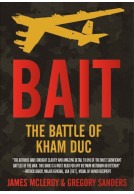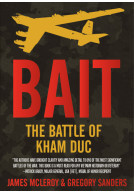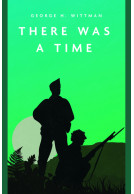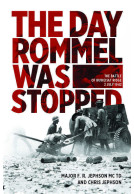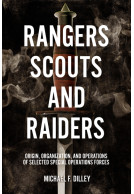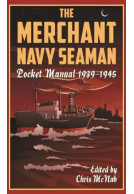Bait (Paperback)
The Battle of Kham Duc
Imprint: Casemate Publishers
Pages: 272
Illustrations: B/w and colour
ISBN: 9781636242170
Published: 15th January 2023
(click here for international delivery rates)
Need a currency converter? Check XE.com for live rates
This is an account of the battle of Kham Duc, one of the least known and most misunderstood battles in the American Phase of the Second Indochina War (1959 to 1975). At the time it was painted as a major American defeat, but this new history tells the full story.The authors have a unique ability to reassess this battle – one was present at the battle, the other was briefed on it prior to re-taking the site two years later. The book is based on exhaustive research, revisiting Kham Duc, interviewing battle veterans, and reading interview transcripts and statements of other battle participants, including former North Vietnamese Army (NVA) officers.Based on their research, the authors contend that Kham Duc did not 'fall' and was not 'overrun'. In fact, it was a successful effort to inflict mass attrition on a major NVA force with minimum American losses by voluntarily abandoning an anachronistic little trip-wire border camp serving as passive bait for General Westmoreland's 'lure and destroy' defensive tactics, as at Khe Sanh.
There are many books on the Vietnam War and more specifically on many of the individual battles. However, the story of Kham Duc has largely gone untold. And generally it is misunderstood. Both of the authors of this book have a unique perspective as McLeroy was actually in the battle and Sanders was briefed on the battle and actually took part in retaking the site two years later. And what follows in this book is the most detailed analysis of this crucial battle in May 1968, the reasons why it occurred, and the conclusion of the story when Kham Duc was retaken two years later. The rather intriguing title of “Bait” draws you in to the idea that what little the reader may know about the battle could be questioned and I can’t think of a more appropriate title.
The Military Enthusiast Book Club
Kham Duc was a Special Forces camp located near the Laotian border that was used to train, equip, and dispatch local indigenous forces on patrols into Laos and the surrounding areas. About five miles south of the camp was a much smaller camp at Ngok Tavak. The debate about this battle stems from the premise that General William Westmoreland who was commander of US forces in Vietnam at the time wanted to lure two NVA regiments in to destroy them. And what also makes this story intriguing is the mix of US, Australian, and indigenous forces making up the defenders both at Ngok Tavak and Kham Duc as well. The smaller outpost of Ngok Tavak was defended by local militia units led by Australian and US officers and NCOs. Later on it is reinforced by USMC 105mm artillery pieces and their crews. However, it what would turn out to be the prelude to the Battle of Kham Duc, the NVA saturate and overwhelm the defenders at Ngok Tavak. Helicopters are called in to rescue the surviving force. And yet some of the defenders are forced to retreat on their own back to Kham Duc by any means possible. Some are successful and some are not. What follows is a buildup of forces then around Kham Duc and the conflicting orders and advice given by units of the Americal Division, the US Special Forces, and lack of clear guidance from higher headquarters. Several observation posts are ordered to be manned knowing they will not have the support required when attacked. And as predicted they receive little to no support. Then as the fog and friction of war ensues more reinforcements are flown into Kham Duc as the defenders are reporting that an evacuation should begin due to decreasing ammunition supplies and the intensity of the NVA attacks. USAF and C-130s, C-123s, and US Army CH-47s are used for these operations and several of them are damaged or shot down. A USAF Combat Control Team (CCT) is inserted to bring order to the chaos of the evacuation and yet it continues. The CCT are the last Americans to leave Kham Duc when Lt Col Joe Jackson a former fighter pilot and now C-123 pilot flies a harrowing approach in to get the CCT guys who have been mistakenly left behind. He is later awarded the Medal of Honor for this successful mission. Hundreds of civilians and local forces were evacuated prior to this along with the US forces. And the end result is that the NVA regiments take Kham Duc but not after suffering large numbers of casualties due to the tremendous amount of air support called in and the heroic defence put up by the very mixed force of defenders.
The book then examines the aftermath and the examinations of what went wrong and why it happened. It’s a very thorough analysis and shows just how decisions made far from the battlefield can negatively impact the course of a battle. The confusion caused by the myriad of command and control networks is also listed as a factor. Sanders also describes the operation to take back Kham Duc two years later in 1970. It was largely uncontested and still showed the scars of the battle two years previously. This book is the definitive account of what was one of the largest and most confusing battles of the Vietnam War. The first hand account from McLeroy of being in the battle and the follow on operation from Sanders adds credence to their premise and analysis of the battle. The details are supported by a thorough appendix and extensive bibliography that show the exhaustive research that went into this book. There is a large photo and map section that help orient the reader to the locations described in the book and the aircraft used in support to the operation. The book is also endorsed by the US Army Asssociation and reviewed by several prominent professors and retired military officers. Additionally, the publishing quality is of the typical high standard set by Casemate. I highly recommend reading this book not only to military history enthusiasts but also anyone with an interest in the Vietnam War.
About James D. McLeroy
James D. McLeroy lived at Kham Duc and led an elite group of U.S. and indigenous Special Forces troops in the battle.







